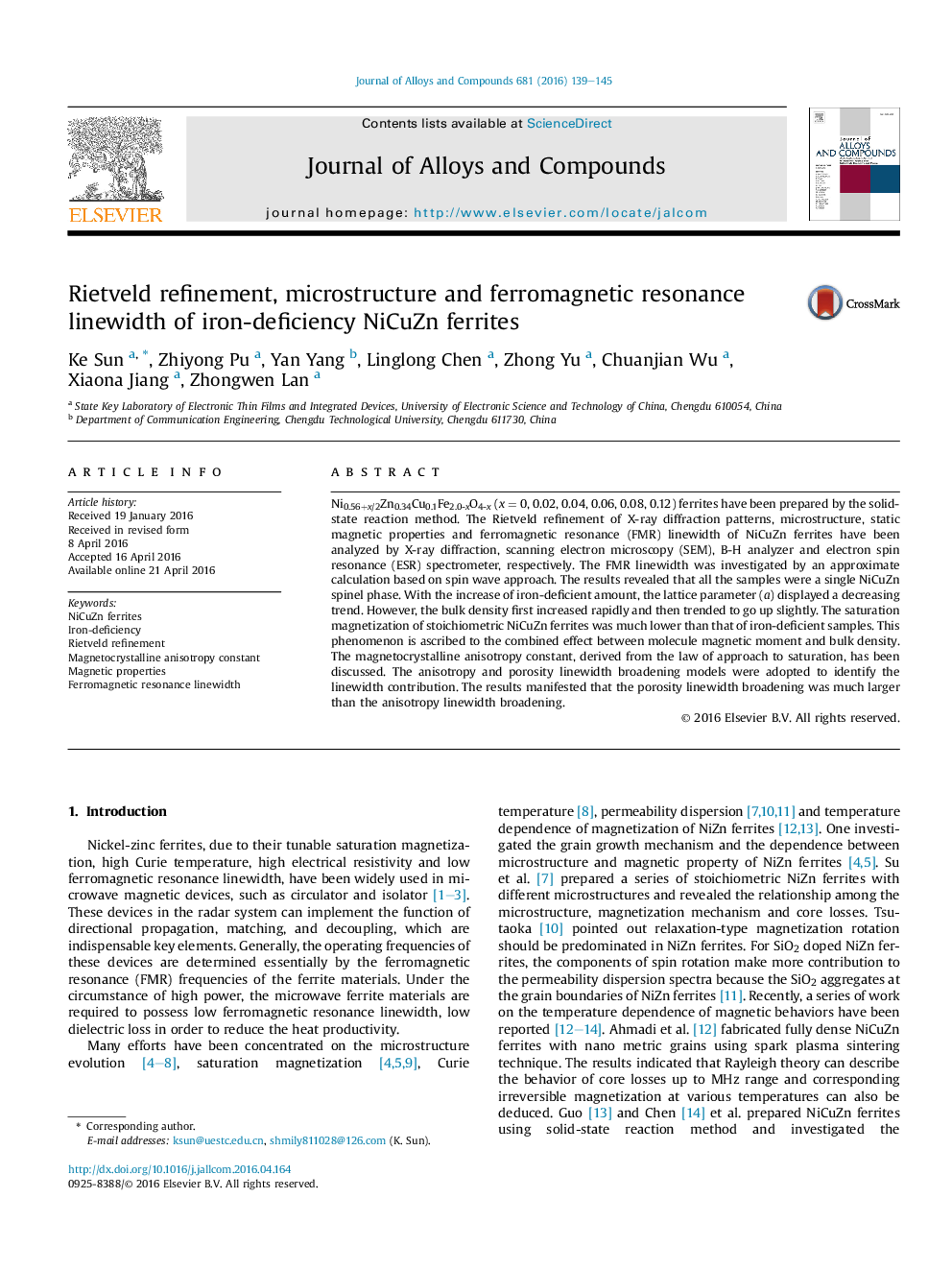| Article ID | Journal | Published Year | Pages | File Type |
|---|---|---|---|---|
| 1605548 | Journal of Alloys and Compounds | 2016 | 7 Pages |
•Iron-deficiency NiCuZn ferrites have been prepared by a solid-state reaction method.•Iron-deficiency NiCuZn ferrite shows high density and saturation magnetization.•The FMR linewidth contribution has been separated based on spin-wave approach.•Porosity linewidth broadening is larger than the anisotropy linewidth broadening.
Ni0.56+x/2Zn0.34Cu0.1Fe2.0-xO4-x (x = 0, 0.02, 0.04, 0.06, 0.08, 0.12) ferrites have been prepared by the solid-state reaction method. The Rietveld refinement of X-ray diffraction patterns, microstructure, static magnetic properties and ferromagnetic resonance (FMR) linewidth of NiCuZn ferrites have been analyzed by X-ray diffraction, scanning electron microscopy (SEM), B-H analyzer and electron spin resonance (ESR) spectrometer, respectively. The FMR linewidth was investigated by an approximate calculation based on spin wave approach. The results revealed that all the samples were a single NiCuZn spinel phase. With the increase of iron-deficient amount, the lattice parameter (a) displayed a decreasing trend. However, the bulk density first increased rapidly and then trended to go up slightly. The saturation magnetization of stoichiometric NiCuZn ferrites was much lower than that of iron-deficient samples. This phenomenon is ascribed to the combined effect between molecule magnetic moment and bulk density. The magnetocrystalline anisotropy constant, derived from the law of approach to saturation, has been discussed. The anisotropy and porosity linewidth broadening models were adopted to identify the linewidth contribution. The results manifested that the porosity linewidth broadening was much larger than the anisotropy linewidth broadening.
